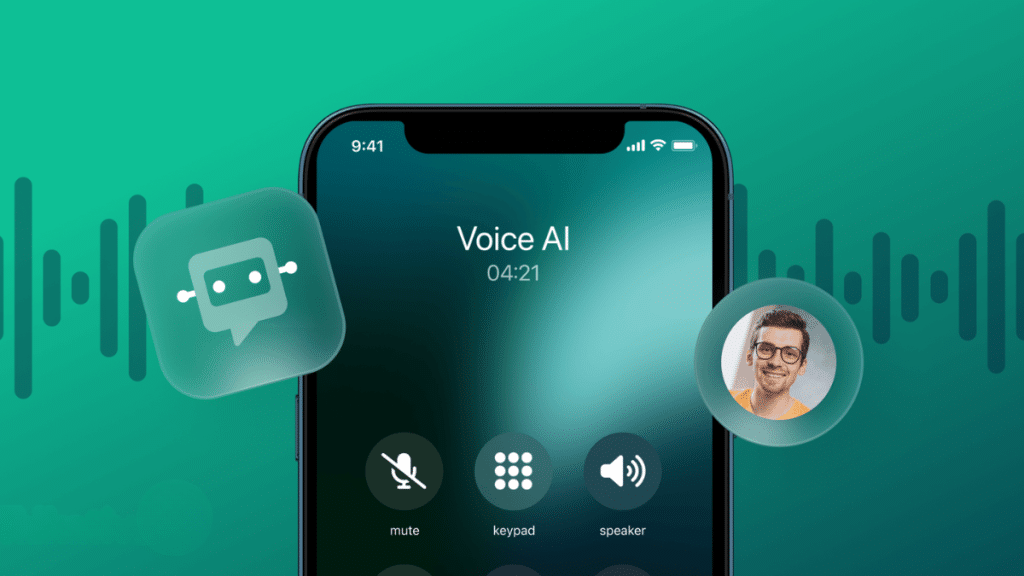For many people, phone-based customer service remains one of the most important contact channels. Whether it’s a question about a bill, help choosing a product or filing a complaint — speaking on the phone feels personal and reliable.
Traditional call centers are increasingly under pressure though: long wait times, limited availability and overwhelmed staff are just some of the challenges. While email and chat have been automated already a long time ago, phone interactions were considered to be the final stronghold of human communication. That’s changing now — quietly but fundamentally.
Voice AI on the Rise: Balancing Technology and Trust
With the advent of powerful voice models and real-time language processing, the landscape has shifted.
Intelligent voicebots are now capable of conducting natural conversations, understanding follow-up questions, responding to context and even resolving issues autonomously. It’s no longer about pressing buttons on a menu — it’s about a real dialogue, guided by machines that sound human.
But how much automation is too much? Are customers truly ready to talk to synthetic voices? And what systems are already setting new standards? One of such solutions is NL Pearl, an AI voice agent built to automate customer phone and voice interactions. These kinds of softwares process spoken language in real time, detects the intent and navigates structured conversations — often without the person on the other end even realizing they’re speaking to a machine.
The goal isn’t to replace human agents entirely, but to reduce pressure in this high-volume area.
Benefits for Businesses — and Customers
The use cases are wide-ranging. In the past, simple inquiries like “What are your hours?” or “Where’s my package?” would tie up human agents. Now, AI systems can handle those efficiently. The result: shorter wait times, consistent service quality and more time for agents to handle complex or sensitive requests.
For companies, this translates to measurable cost savings and improved service. For customers, it means faster responses and the convenience of getting help even outside standard business hours. Especially in industries like e-commerce and utilities for example, where support is often needed around the clock, this is a real game-changer.
Growing Acceptance comes with Conditions
Interestingly, studies show that most people nowadays are open to automated support — as long as it works well. What matters isn’t who’s speaking, but how quickly and effectively a problem is solved. If a voicebot is unhelpful or hard to understand, frustration builds fast.
That’s why many providers today still rely on hybrid models. The voicebots handle simple tasks, while more complex issues are seamlessly transferred to human agents. This approach balances efficiency and trust, delivering a smoother experience.
The Human Factor in Automated Conversations
Even as voice technology becomes increasingly seamless, the human element remains critical. Customers expect more than just correct answers. They also want to feel understood. That’s why successful voice systems don’t just process commands − they replicate the tone, flow and the nuances of natural conversation.
This means that intelligent agents must be able to handle pauses, changes in topic, interruptions and even emotional cues. It requires more than just speech recognition — it demands context awareness and adaptive dialogue management.
The most advanced systems today are designed to replicate these dynamics. They analyze intent, modulate their responses, and maintain the rhythm of a real interaction instead of just a transaction.
Challenges Behind the Scenes
Building a voicebot that works is one thing. Deploying it at scale, across industries and customer types, is another.
Dialects, background noise, unexpected phrasing — all these can trip up even sophisticated models. So the real challenge lies in striking the right balance between automation and fallbacks. A well-designed system doesn’t try to solve everything: It knows when to pass control to a human.
Moreover, trust plays a pivotal role in this context. Customers are far more likely to embrace voice AI if transparency is built in. Letting users know they’re speaking to an AI — and clearly offering the option to switch to a human agent — creates an important sense of fairness and control.
Looking Ahead: What’s Next for Voice-Based Customer Service?
As speech technology matures, voicebots will move beyond reactive support toward proactive, predictive interaction.
Future systems will recognize patterns, anticipate customer needs, and initiate contact before a problem arises. This could mean reminding a customer about a delayed delivery, suggesting an upgrade or flagging a potential issue based on previous interactions — all without the customer needing to ask in the first place.
Another area of growth is multilingual support. With global customer bases, companies need voicebots that can switch languages fluently, understand cultural nuances and adapt the tone accordingly.
Implementing Voice AI isn’t just a technical upgrade — it’s a shift toward more inclusive, personalized service.
